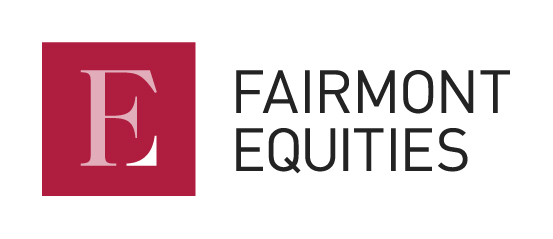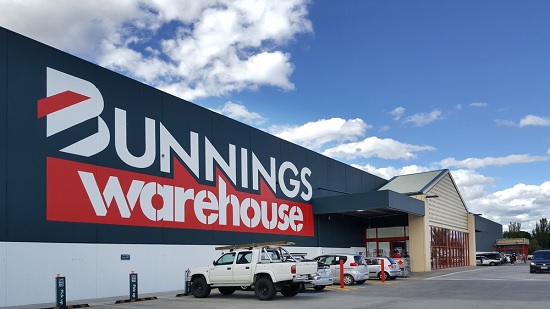Shares in Wesfarmers Limited (ASX:WES) have significantly de-rated from a 1-year forward P/E multiple of ~30x at the time of the FY21 results release in August to ~23x at present. They are also trading at a discount of ~10% to the average valuation placed on the shares by the market.
Margin pressure and concerns about the potential impact from higher on interest rates on the level of consumer discretionary spending (which is a key market exposure for nearly 90% of the group’s earnings base) have continued to weigh on the shares.
With this in mind, we recently researched the Company, to assess whether there is prospect for a recovery back towards recent highs.
About Wesfarmers
Wesfarmers is a diversified business operating in department stores, home improvement, office supplies, chemicals, energy & fertilisers and industrials & safety products.
The main earnings and valuation driver for the shares in the Bunnings division. In context, Bunnings has generated sales growth of 15% per annum over the past 25 years. A large part of the current strategy relates to increasing the rate of penetration into the high-growth commercial trade segment of the sizeable home & hardware market in Australia (which is estimated to be $79b). The expansion into commercial trade will be achieved through the national rollout of specialist tool &
power equipment retailer Adelaide Tools (now rebranded to Tool Kit Depot) as well as the recent acquisition of Beaumont Tiles to enhance its position in flooring. This is a category where Bunnings has traditionally had low penetration rates.
Key Fundamental Drivers
Margin Pressure Likely to Continue
For the six months to 31 December 2021 (1H22), group EBIT margin dropped 150 basis points to 10.1%. It was impacted by the extended lockdowns in NSW, Victoria, ACT and NZ during the half as well as supply chain constraints and labour shortages. WES also incurred additional COVID-19-related costs (i.e. cleaning, security and PPE) and also paid its employees pandemic leave through periods of the prolonged lockdowns.
Across the key divisions, EBIT margins contracted for: i) Bunnings (-90 basis points) due to supply chain issues, ii) Kmart (-540 basis points), which was partially driven by rising freight costs and costs associated with holding elevated levels of inventory, and iii) Officeworks (-140 basis points), partially due to additional costs coming through resulting from elevated levels of online sales being fulfilled from stores.
All divisions have flagged a cautious outlook as the Company expects further COVID-19-related costs, supply chain and logistics constraints, and inflationary pressures. It is expected that there will be additional costs and lack of supply in some areas.
Other notable impacts on margin over the short-to-medium term include further investment in online capability, as well as inflationary pressures. This could lead to volume growth in order to drive EBIT growth and come at the expense of EBIT margins in the near-term.
Earnings for Kmart Group Difficult to Predict
The Kmart Group includes Kmart, Target, and Catch.com (an online marketplace). The Company’s recent strategy has been to convert large-format Target stores to Kmart and/or Target Country stores in order to accelerate profitability. Target is now a “smaller and simpler” business the number of stores having declined from 296 in 1H19 to ~140 stores at the end of FY21. The rationale here is that Kmart’s value-focused model will continue to resonate with customers in a post-COVID-19 environment.
In the prior corresponding period (1H21) (prior to the 2021 lockdowns), this strategy was started to generate pleasing results. Target surprised with +13.0% like-for-like sales growth in 1H22 and profitability improved significantly due to a higher proportion of full-price sales and lower operating costs. In addition, Kmart saw higher sales and lower clearance costs driving revenue growth +5.7%. However, this only partially offset increased online fulfillment costs and higher freight charges.
Performance for the Kmart Group was significantly impacted in 1H22 as a result of government-mandated store closures due to lockdowns, which saw 20% of trading days lost. Revenue declined by 10% to $4.9b and a 56% decline in earnings before tax, as the Company continued to pay staff and rent during this period, turning a variable cost base into a fixed one.
In terms of the outlook, earnings for the Kmart Group are difficult to predict given the significant reduction in store numbers, and changes to the inventory and cost base that have occurred. Having said that, with the Company expecting the short-term outlook to remain uncertain and volatile, divisional earnings are likely to be significantly lower in FY22. This is in light of inflationary pressure (in particular from rising cotton and timber prices), higher transport costs and continued investment in online operations.
Balance Sheet Remains in Solid Position Despite Higher Debt Levels
The balance sheet held a net debt position of $2.6b as at 31 December 2021. This was compared to a net cash position of $0.1b as at 1H21. The increase in debt was largely driven by a distribution of $2.3b of surplus capital by way of capital return in December 2021.
Notwithstanding the increase in net debt, the Company has significant balance sheet flexibility and capacity and has re-positioned the balance sheet in order to optimise its cost of funds and debt maturity profile.
Fundamental View
At current levels, we consider the discount to valuation to be justified. This is given the prospect of further margin pressure at the group level given that supply chain disruptions, elevated transport costs, labour constraints and investment in online capabilities are expected to continue in 2H22.
Consensus estimates are presently factoring in a 9% decline in EPS for FY22 and a return to high-single digit growth in FY23 and FY24. However, the resumption of earnings growth in FY23/24, as COVID-19 and supply chain impacts subside, relies on the Bunnings division further executing on its strategy, a stabilisation in earnings for the Kmart Group and evidence that the significant investment in online capability is returning a sufficient enough Return on Investment.
Accordingly, the next likely positive catalyst for the shares is the upcoming annual Strategy Day on 2 June.
Charting View
WES has now retraced nearly 50% of the 2020 – 2021 rally. Forty eight dollars is an obvious support level where it now appears as though WES is finding a base. We also have some bullish divergence on the daily RSI (diagonal line). There is therefore a strong chance that this is either the low or very close to the low for WES. It is therefore likely to base here for a bit and then head higher as we head into the Strategy Day in June.

Michael Gable is managing director of Fairmont Equities.
Current share prices available here.
You can learn more about technical analysis in this article.
An 8-week FREE TRIAL to The Dynamic Investor can be found HERE.
Would you like us to call you when we have a great idea? Check out our services.
Disclaimer: The information in this article is general advice only. Read our full disclaimer HERE.
Like this article? Share it now on Facebook and Twitter!

